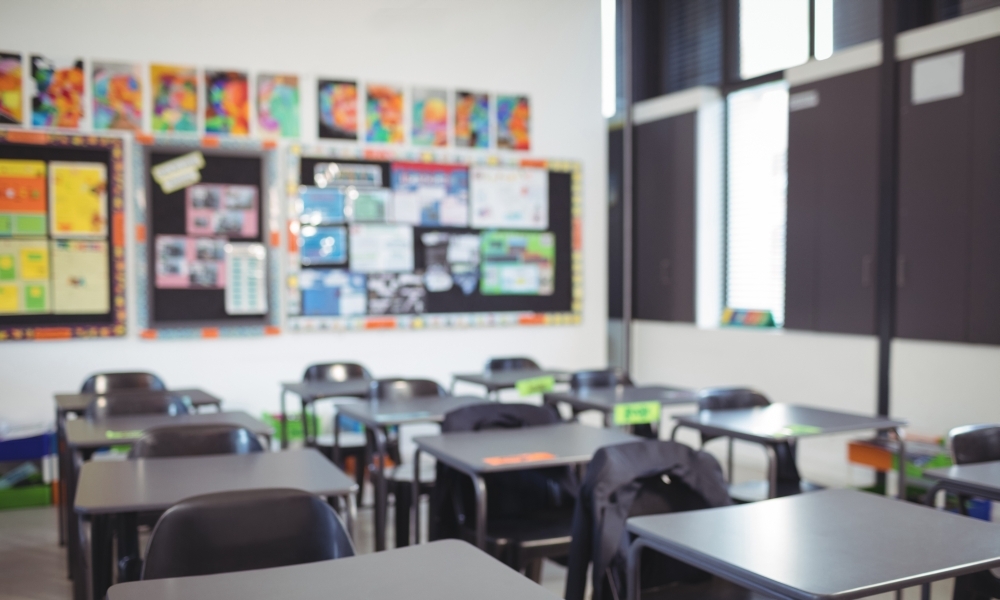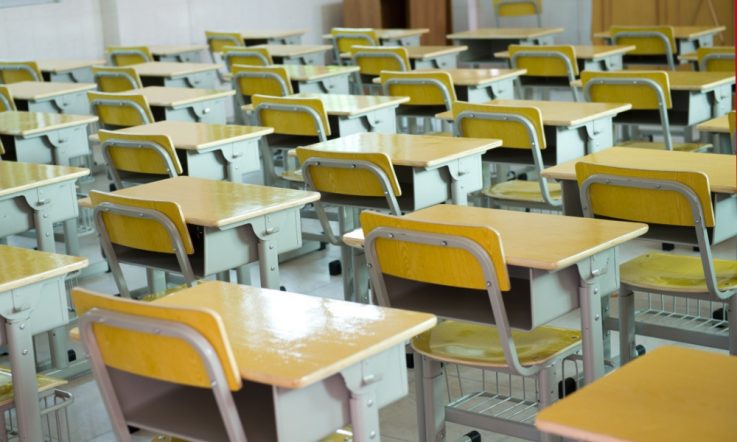Although teachers rarely have a say in the learning space they’re assigned, opportunities lie in how the walls, doors, ceiling and floors are used to display student work and topic material throughout the school year.
So, when it comes to classroom displays, how much is too much? In what areas of the classroom should you aim to avoid placing displays? Here, we speak to Professor Peter Barrett about how to best utilise classroom displays to improve student learning.
Professor Peter Barrett has studied the connection between the physical design of schools and student academic progress for years, publishing the Clever Classrooms study in 2015, which was the focus of an episode of our Research Files podcast shortly after its release. The study, which assessed 153 primary school classrooms on their physical characteristics, found that the physical environment of the classroom can explain 16 per cent of the variation in learning progress over one school year.
‘Our study was one of the first, if not the first, to take a really broad view of a wide range of physical classroom design factors and successfully relate them to learning impacts,’ Barrett tells Teacher. ‘Since then, we have carried out a series of smaller projects concerned mainly with practical implementation of the results.’
Avoiding overcrowding, but ensuring spaces aren’t too bare
‘If all the walls are completely covered with lively displays it seems, from our empirical results, that the environment created is just too distracting. Equally though, if the walls are left bare it is under-stimulating,’ Barrett explains.
‘So somewhere in between is ideal. One way of saying this can be that covering up to 80 per cent of the wall area in “calm” displays, or limiting this to 50 per cent if the displays are “lively”, is about optimal for learning.’
Barrett adds that his research team came across quite a few classrooms with displays covering windows. While these displays can look nice, he says the fact that they obstruct daylight outweighs the visual gratification of window displays.
‘It is theoretically possible to imagine a classroom with large windows facing the sun where some obscuring of the sun could be welcome, but in absolutely most cases daylight should be prioritised. This is because daylight (without glare) was the biggest factor we found with positive impacts on learning rates,’ he shares.
Being innovative with classroom displays
Barrett has witnessed many instances of innovative wall displays in classrooms. One of the most powerful ways to be innovative with your displays is to make the whole greater than the sum of the parts, he explains. This can happen when a class project brings together a range of individual work into a class display the students all own together, he says.
‘I still remember a project like this from my primary school where we each did lino-cuts of different buildings that when they were joined up created a whole street in our town and linked to a topic about local history and industry,’ Barrett shares. ‘So increasing the scope and evolution of wall displays can deepen their impact and, from personal experience, greatly increase the sense of pride in a collective achievement.’
Another consideration to make is taking displays outside of the classroom. Some schools are starting to place these outside of the entrance to the classroom so that this sense of belonging and orientation starts from the moment they enter their space, Barrett explains.
As we’re at the beginning of the school year, considerations can also be made on the types of wall displays which are most beneficial for this time. For instance, he says, there is an opportunity at the start of the year for students to actively contribute to personalising the space.
‘As time goes on there is the necessity to keep the teacher's topic material fresh and relevant. There is also the need to “turn over” the pupils’ work – so, making possible more opportunities for all pupils to have their work displayed. In this way the steady cluttering up of the walls can be avoided and positive use continue to be made of this dimension of the teaching space.’
Stay tuned, next week we discuss with Barrett the importance of maintaining a balance between displaying materials made by teachers and displaying student work.
References and further reading
Barret, P., Davies, F., Zhang, Y., Barrett, L. (2015). The impact of classroom design on pupils' learning: Final results of a holistic, multi-level analysis. Building and Environment, Vol. 89. https://doi.org/10.1016/j.buildenv.2015.02.013
Clever Classrooms website – here, you can explore the body of Barrett and colleagues’ work on the physical environment of the classroom.
As you’re setting up your classroom for the new year, consider some aspects of displays to come from Peter Barrett’s research in relation to student belonging.
Have you considered taking wall displays outside the classroom to focus on the entrance area? How do you ensure each student has the opportunity to have their work displayed?



